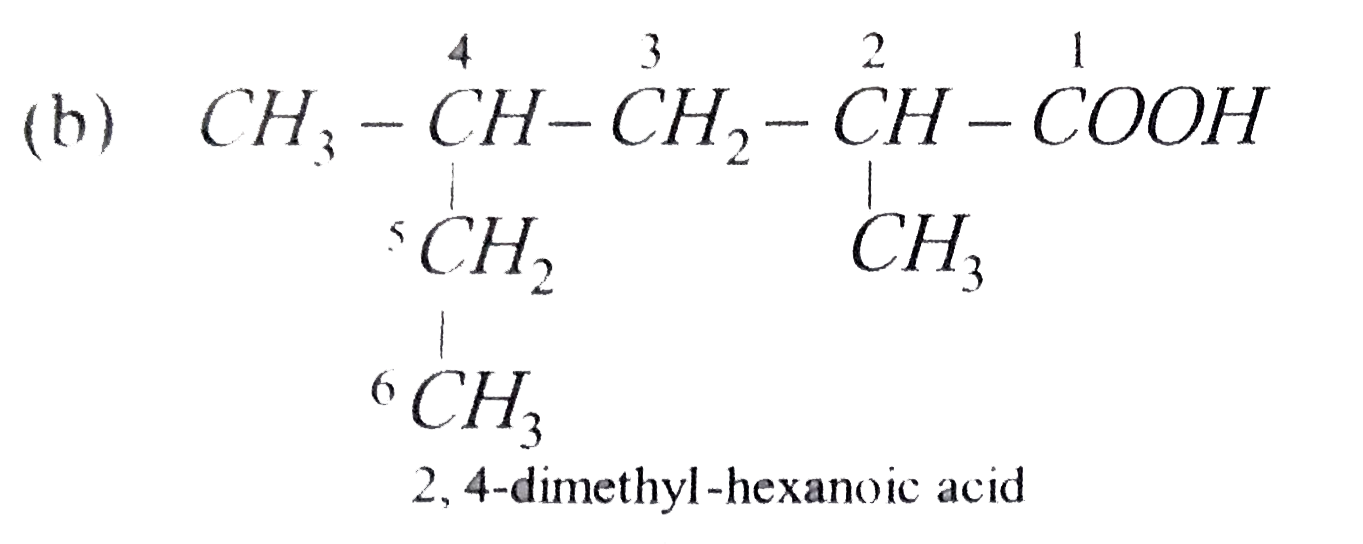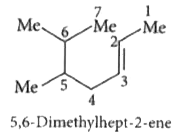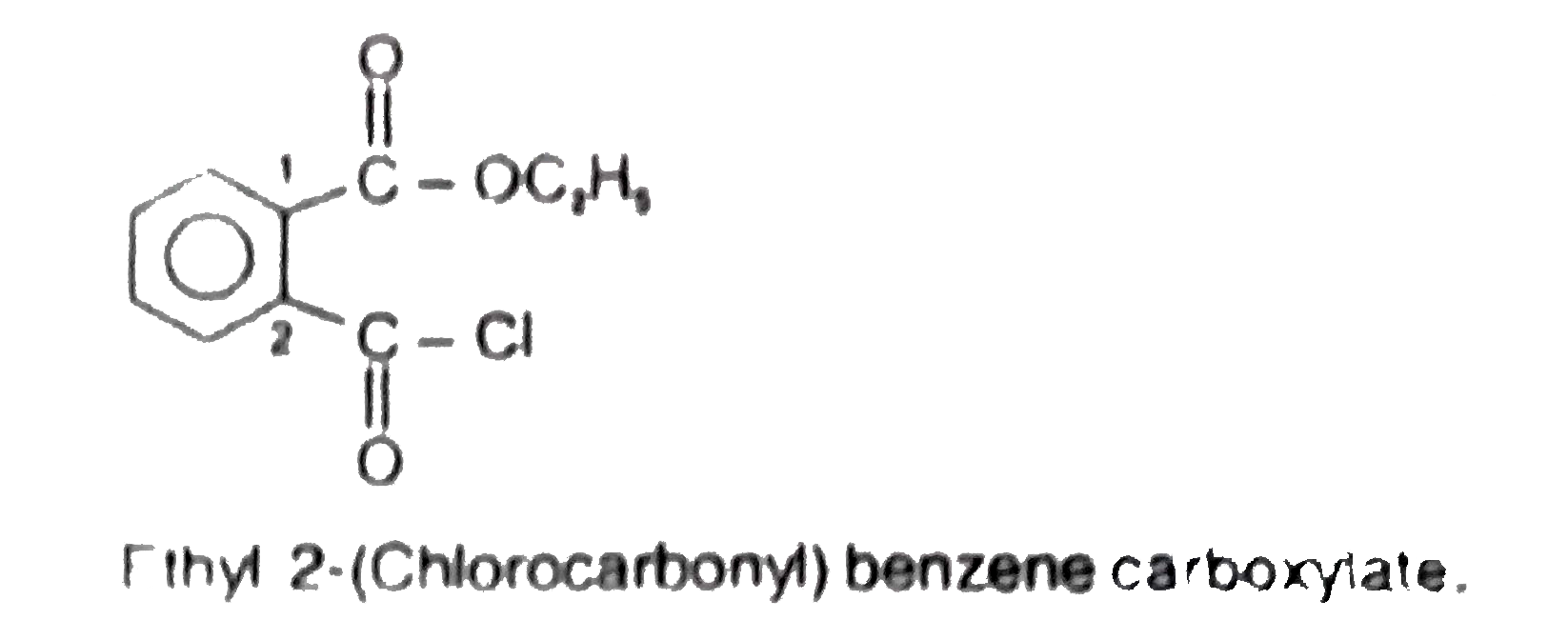Explore topic-wise InterviewSolutions in .
This section includes InterviewSolutions, each offering curated multiple-choice questions to sharpen your knowledge and support exam preparation. Choose a topic below to get started.
| 29101. |
The K.E. of N molecule of O_(2) is x Joules at -123^(@)C. Another sample of O_(2)" at "27^(@)C has a KE of 2x Joules. The latter sample contains. |
|
Answer» N MOLECULE of `O_(2)` `(3)/(2)xxRxx150=(3)/(2)xx8.314xx75=xJ =225xx8.314=xJ` At `27^(@)C=27+223=300K` KE for =2X Joule `=(3)/(2)xx8.314xx300` N molecule `THEREFORE x" Joule "=3xx8.314xx75` In both the cases x Joules correspond to N MOLECULES. Hence, (A) is the correct answer. |
|
| 29102. |
The K_c of an acid is 3.2 xx 10^(-5). The degree of dissociation of the acid at concentration of 0.2 M is : |
|
Answer» `6.0 XX 10^(-2)` |
|
| 29103. |
The K_(a) values also denote that OH^(-) is a stronger base and TeH^(-) is a weaker base. |
|
Answer» Solution :TELLURIUM forms oxides of the formula `TeO, TeO_(2), and TeO_(3)` What is the NATURE of these oxides?`TeO` (oxidation number of `Te is +2`) is BASIC. `TeO_(2)` (oxidation number of Te is +4) is AMPHOTERIC. `TeO_(3)` (oxidation number of Te is +6) is acidic. As the oxidation number of the element forming oxide increases, the acidic nature also increases. |
|
| 29104. |
The K_a value for HCN is 10^-9. What is the pH of 0.4 M HCN solution? |
|
Answer» SOLUTION :`K_a=10^-9` `C=0.4M` `pH=-log[H^+]` `[H^+]=SQRT(K_a TIMES c)` `[H^+]=sqrt(10^-9 times0.4)` `[H^+]=2 times10^-5` `thereforepH=-log(2 times10^-5)` `=-log2-log(10^-5)` `=-0.3010+5` `pH=4.699` |
|
| 29105. |
The K_(a)value for HCN is 10^(-9) . What is the pH of 0.5 M HCN solution ? |
|
Answer» SOLUTION :`K_(a)=10^(-9)` c=0.4 M` pH=-log[H^+]` `[H^+]=sqrt(k_axxc)` `=sqrt(10^(-9)xx0.4)` `=2XX10^(-5)` `THEREFORE pH=-log(2xx10^(-5))` `=5-log2` `=5-0.3010` `=4.699`. |
|
| 29106. |
The K_(a) of monobasic acid P, Q and R are 10^(-6),10^(-8) and 10^(-10) respectively. The concentrations of P, Q and R are respectively 0.1M, 0.01 M and 0.001 M . Q. Which acid has the minimum pH? |
|
Answer» P |
|
| 29107. |
The Ka of propionic acid is 1.34 xx 10^(-5). What is the pH of a solution containing 0.5 M propionic acid and 0.5 M sodium proportionate ? What happens to the pH of the solution when volume is doubled by adding water ? |
|
Answer» Solution :`Ka" of propionic ACID "=1.34xx10^(-5)` `THEREFORE""pK_(a)=-logK_(a)=-log(1.34xx10^(-5))` `=4.87` By Herderson - Hasselbalch equation `pH=pK_(a)+log.(["salt"])/(["acid"])` `=4.87+log""(0.5)/(0.5)` `pH=4.87` 87 Alternative solution : The DISSOCIATION EQUILIBRIUM of propionic acid will be `K_(a)=([C_(2)H_(5)COO^(-)][H^(+)])/([C_(2)H_(5)COOH])=(0.5xx[H^(+)])/(0.5)` `=[H^(+)]` `therefore""pH=-log[H^(-)]` `=-logK_(a)=-log(1.34xx10^(-5))` `therefore pH=4.87` |
|
| 29108. |
The Ka of propionic acid is 1.34 xx 10^(-5). What is the pH of a solution containing 0.5 M propionic and 0.5 M sodium proportionate ? What happens to the pH of the solution when volume is doubled by adding water ? |
|
Answer» Solution :`Ka" of propionic acid "=1.34xx10^(-5)` `therefore""pK_(a)=-logK_(a)=-log(1.34xx10^(-5))` `=4.87` By Herderson - Hasselbalch EQUATION `pH=pK_(a)+log.(["salt"])/(["acid"])` `=4.87+log""(0.5)/(0.5)` `pH=4.87` 87 Alternative solution : The dissociation equilibrium of propionic acid will be 2)H_(5)COOH rarr C_(2)H_(5)COO^(-)+H^(+)` `K_(a)=([C_(2)H_(5)COO^(-)][H^(+)])/([C_(2)H_(5)COOH])=(0.5xx[H^(+)])/(0.5)` `=[H^(+)]` `therefore""pH=-log[H^(-)]` `=-logK_(a)=-log(1.34xx10^(-5))` `therefore pH=4.87` |
|
| 29109. |
The K_(a) and K_(b) values of alpha-amino acids are very low. Explain. |
| Answer» Solution :The `K_(a)and K_(b)` values of `alpha`-amino acids are very low because, in `alpha`-amino acids, the acidic group is `-overset(+)(N)H_(3)` instead of `-COOH` in carboxylic acids and basic group is `-COO^(-)` instead of `-NH_2` is group in ALIPHATIC amines. FRO example , the `K_(a) and K_(b)` values of glycine are `1.6xx10^(-10) and 2.5xx10^(-12)` respectively. | |
| 29110. |
The K of AgCl, AgBr and Agl are X, y and z respectively. On addition of AgNO_3, in the equimolar solution of CI^- Br^- and I^- ions, Agl Ist appears as precipitate followed by AgBr, and then AgCl. The relation between x y and z is |
|
Answer» `X LT y lt Z` |
|
| 29111. |
The K _(a) values of H_(2)Se and H_(2) Te are respectively |
|
Answer» `1.3 xx 10 ^(-4), 2.3 xx 10 ^(-3)` |
|
| 29112. |
The judical system in our country is quite slow. Sometimes it takes 10-15 years to decide a criminal or a rape or a paternity case. Pragya, a class XII student, pointed out that reacent developments in forensic sciences has evolved DNA fingerprinting technique which is quite fast and gives relibale results. After rading the above pasage, answer the following questions : (i) What is DNA fingerprinting and how DNA fingerprinting has been useful in identification of criminals. (ii) How DNA fingerprinting has been used to determine the paternity of a person ? (iii) Can DNA fingerprinting be used to prove someone innocent ? |
|
Answer» Solution :(i) Every person has his own uniqe fingerprints. Like fingerprints , each person's DNA is UNIQUE. Any cell such as skin , blood, semen, saliva , etc. can supply the DNA samples for analysis. The fingerprints from the site of crime are collected and then amplified. These fingerprints are then compared with the DNA fingerprints of all the suspects and of otherf people known to have been present at the scene or the site of crime. A perfect match of fingerprints identifies the criminal. (ii) Since children inherit half of their DNAfrom each parent , therefore , DNA fingerprinting has been used to establish the parentage of a child of contested biological ORIGIN. Recently, the paternity of a youth who CLAIMED to be the son of Mr.N.D. Tiwari, a veteran politician has been established by DNA fingerprinting. (iii) DNA fingerprinting has been useful in proving suspected people innocent. if the DNAfingerprinting does not match , the suspected person in innocent. In this way, hundreds of people have been shown to be innocent and freed, some after spending MANY YEARS in prison. |
|
| 29113. |
The joule-Thomson coefficient for a gas is zero at : |
|
Answer» INVERSION temperature |
|
| 29114. |
The IUPACname of Pt.(NH_3)_4NO_2Cl]SO_4is : |
|
Answer» Chloronitro PLATINUM (IV) SULPHATE |
|
| 29115. |
IUPAC name for the element with Z = 117 is"_____" and its symbol is " ____". |
| Answer» ANSWER :D | |
| 29116. |
The IUPAC nomenclature for the complex Na[PtBrCl(NO_(2))(NH_(3))] is: |
|
Answer» SODIUM amminechlorobromonitro-N-platinum (II) |
|
| 29117. |
The IUPAC names of open chain aliphatic aldehdes and ketones are derived from the names of the corresponding alkanes by replacing the ending -e with -al and - one respectively. In case of aldehydes the longest carbon chain is numbered starting from the carbon of the aldehyde group while in case of ketones the numbering begins from the the end nearer to the carbonyl group. The substituents are prefixed in alphabetical order along with numberals indicating their positions one . when the aldehyde group is attached to a ring, the suffix carbaldehyde is added after the full name of the cycloalkane. The numbering of the ring carbon atoms start from the carbon atom attached to the aldehyde group. The name of the simplest aromatic aldehyde carrying the aldehyde group on a benzene ring is benzenenecarbaldehyde. However, the common name benzaldehyde is also accepted by IUPAC. Other aromatic aldehydes are hence named as substituted benzaldehydes. Name the following compound as per IUPAC system ? CH_3 - overset(Cl)overset(|)C=CHCH-CHO |
| Answer» SOLUTION :3 - Chlorobut - 2- ENAL. | |
| 29118. |
The IUPAC names of open chain aliphatic aldehdes and ketones are derived from the names of the corresponding alkanes by replacing the ending -e with -al and - one respectively. In case of aldehydes the longest carbon chain is numbered starting from the carbon of the aldehyde group while in case of ketones the numbering begins from the the end nearer to the carbonyl group. The substituents are prefixed in alphabetical order along with numberals indicating their positions one . when the aldehyde group is attached to a ring, the suffix carbaldehyde is added after the full name of the cycloalkane. The numbering of the ring carbon atoms start from the carbon atom attached to the aldehyde group. The name of the simplest aromatic aldehyde carrying the aldehyde group on a benzene ring is benzenenecarbaldehyde. However, the common name benzaldehyde is also accepted by IUPAC. Other aromatic aldehydes are hence named as substituted benzaldehydes. How is the carbon chain numbered in case of ketones according to IUPAC nomenclature ? |
| Answer» Solution :The numbering of the CARBON CHAIN BEGINS from the END nearer to the carbonyl group. | |
| 29119. |
The IUPAC names of open chain aliphatic aldehdes and ketones are derived from the names of the corresponding alkanes by replacing the ending -e with -al and - one respectively. In case of aldehydes the longest carbon chain is numbered starting from the carbon of the aldehyde group while in case of ketones the numbering begins from the the end nearer to the carbonyl group. The substituents are prefixed in alphabetical order along with numberals indicating their positions one . when the aldehyde group is attached to a ring, the suffix carbaldehyde is added after the full name of the cycloalkane. The numbering of the ring carbon atoms start from the carbon atom attached to the aldehyde group. The name of the simplest aromatic aldehyde carrying the aldehyde group on a benzene ring is benzenenecarbaldehyde. However, the common name benzaldehyde is also accepted by IUPAC. Other aromatic aldehydes are hence named as substituted benzaldehydes. How do we name aromatic aldehydes ? |
| Answer» Solution :The NAME benzaldehyde is accepted by IUPAC. HENCE AROMATIC aldehydes are NAMED as substituted benzaldehydes. | |
| 29120. |
The IUPAC names of open chain aliphatic aldehdes and ketones are derived from the names of the corresponding alkanes by replacing the ending -e with -al and - one respectively. In case of aldehydes the longest carbon chain is numbered starting from the carbon of the aldehyde group while in case of ketones the numbering begins from the the end nearer to the carbonyl group. The substituents are prefixed in alphabetical order along with numberals indicating their positions one . when the aldehyde group is attached to a ring, the suffix carbaldehyde is added after the full name of the cycloalkane. The numbering of the ring carbon atoms start from the carbon atom attached to the aldehyde group. The name of the simplest aromatic aldehyde carrying the aldehyde group on a benzene ring is benzenenecarbaldehyde. However, the common name benzaldehyde is also accepted by IUPAC. Other aromatic aldehydes are hence named as substituted benzaldehydes. How do we derive the names of open chain aliphatic aliphatic aldehydes and ketones ? |
| Answer» Solution :The names are DERIVED from the names of CORRESPONDING alkanes by replacing the ending -E with - AL and - one respectively. | |
| 29121. |
The IUPAC name of Zeise's salt is |
|
Answer» TETRAMMINECOPPER `(II)` sulphate |
|
| 29122. |
The IUPAC name of[Cr(NH_(3))_(3)](H_(2)O)_(3)]Cl_(3) is………… . |
|
Answer» |
|
| 29123. |
The IUPAC name of Xe[PtF_(6)] is: |
|
Answer» Hexafluoroplatinate(VI) xenon |
|
| 29124. |
The IUPAC name of underset("Br ")underset("| ")("C ")H_(2)-underset("Br ")underset("| ")("C ")H_(2) is …….. |
|
Answer» ETHANE-1,2-DIBROMIDE |
|
| 29125. |
The IUPAC name of this compound {:(CH_(3)-CH-CH_(2)-CH-COOH),("|""|"),(""C_(2)H_(5)""CH_(3)):} |
|
Answer» 2,2-diethyl pentanoic ACID 
|
|
| 29126. |
The IUPAC name of the product obtained by the oxidation of phenol with the help of chromic acid is …… |
|
Answer» CYCLO HEXA - 2,4 - DIENE - 1,4 - DIONE 
|
|
| 29127. |
The IUPAC name of triethylamine is |
|
Answer» N, N-Diethylethanamine |
|
| 29128. |
The IUPAC name of the major organic product of the reaction :CH_(3)CH_(2)CH=CH_(2)+HBr overset(" Peroxide ")rarr |
|
Answer» 1,2- DIBROMOBUTANE |
|
| 29129. |
The IUPAC name of the major organic product of the reaction : CH_(3)CH_(2)CH=CH_(2)+HBr overset("Peroxide")(rarr) |
|
Answer» 1,2-Dibriomobutane |
|
| 29130. |
The IUPAC name of the given structure H is: |
|
Answer» 2,2-dimethyl BUTANE |
|
| 29131. |
The IUPAC name of the lowest molecular mass tertiary amine is_____ |
| Answer» SOLUTION :N,N-dimethylmethanamine. | |
| 29132. |
The IUPAC name of the given structure A is:- |
|
Answer» 1,2-dimethylcyclopropane |
|
| 29133. |
The IUPAC name of the given compound CH_(3)-CH_(2)-underset(O)underset(||)(C)-underset(CN)underset(|)(CH)-underset(O)underset(||)(C)-H is: |
|
Answer» 2-cyano-3-oxopentanal |
|
| 29134. |
The IUPAC name of the following structure is {:(CH_(3)-C-CH_(2)-COOH),("||"),(""O):} |
|
Answer» 3-ketobutanoic acid |
|
| 29135. |
The IUPAC name of the given compound |
|
Answer» Octylcyclopentane |
|
| 29136. |
The IUPAC name of the following molecule is |
|
Answer» 5,6-dimethylhept-2-ene 
|
|
| 29137. |
The IUPAC name of the following is: CH_(3)CH=CH-CH_(2)-underset( NH_(2))underset(|)(CH)-CH_(2)COOH |
|
Answer» 3-aminohept-5-enoic ACID |
|
| 29138. |
The IUPAC name of the following compound is : O=underset(OH)underset(|)(C)-underset(NH_(2))underset(|)(CH)-underset(OH)underset(|)(CH_(2)) |
|
Answer» 3-amino-2-hydroxypropanoic ACID |
|
| 29139. |
The IUPAC name of the following compound is (CH_(3))_(2)CH-CH_(2)CH=CH-CH=CH-underset(C_(2)H_(5))underset(|)(CH)CH_(3) |
|
Answer» 1,1,7,7-tetramethyl-2,5,-octadiene |
|
| 29140. |
The IUPAC name of the following compound is: (CH_(3))_(2)CH-CH_(2)CH=CH-CH=CH-underset( C_(2)H_(5))underset(|)(CHCH_(3)) |
|
Answer» 1,1,7,7-tetramethyl-2,5-octadiene |
|
| 29141. |
The IUPAC name of the following compound is CH_(3)-underset(C_(6)H_(5))underset(|)(CH)-CH_(2)-CH_(3) |
|
Answer» 2-cyclohexylbutane |
|
| 29142. |
The IUPAC name of the following compound is: CH_(3)-CH=CH-CH=C |
|
Answer» Pent-4-yn -2-en |
|
| 29143. |
The IUPAC name of the following compound is CH_(2)=CH-CH_(2)OCH_(3) |
|
Answer» ALLYL METHYL ETHER |
|
| 29144. |
The IUPAC name of the following compound is |
|
Answer» 2-(Ethoxycarbonyl) benzylchloride 
|
|
| 29145. |
The IUPAC name of the following compound CH_(3)-underset(CH_(3))underset(|)(N)-underset(C_(2)H_(5))underset(|)overset(CH_(3))overset(|)(C)-CH_(2)- CH_(3) is: |
|
Answer» 3-dimethylamino-3-methylpentane |
|
| 29146. |
The IUPAC name of the following compound is : |
|
Answer» 4-bromo-3-cyanophenol |
|
| 29147. |
The IUPAC name of the following compound is : |
|
Answer» 2-Cyclohexyl BUTANE |
|
| 29148. |
The IUPAC name of the following compound is : |
|
Answer» 4-Bromo-3-cyanophenol |
|
| 29149. |
The IUPAC name of the following compound H_(3)C-CH_(2)-underset(CH_(2)CH_(3))underset(|)(CH)-CH_(2)-underset(CH_(3))underset(|)(CH)-CH_(2)CH_(3) is: |
|
Answer» 3-ethyl 1-5-methylheptane |
|
| 29150. |
The IUPAC name of the following compound |
|
Answer» Propionic ANHYDRIDE |
|